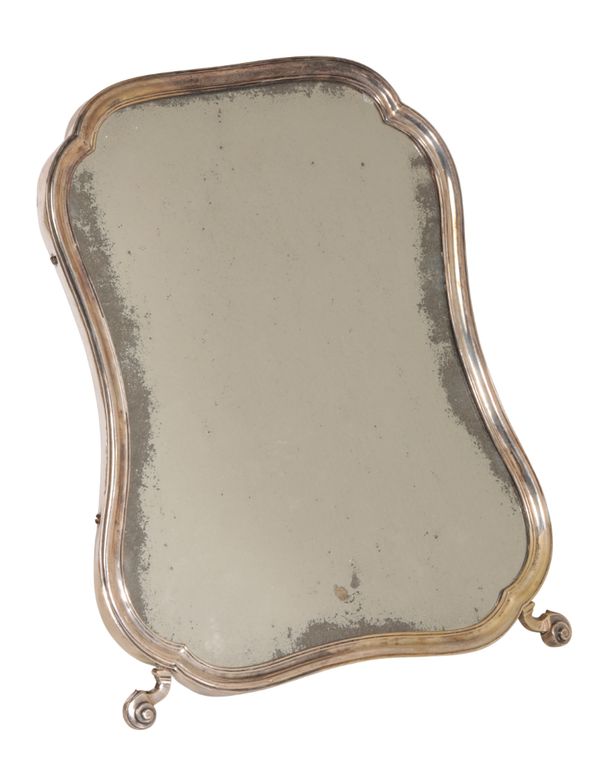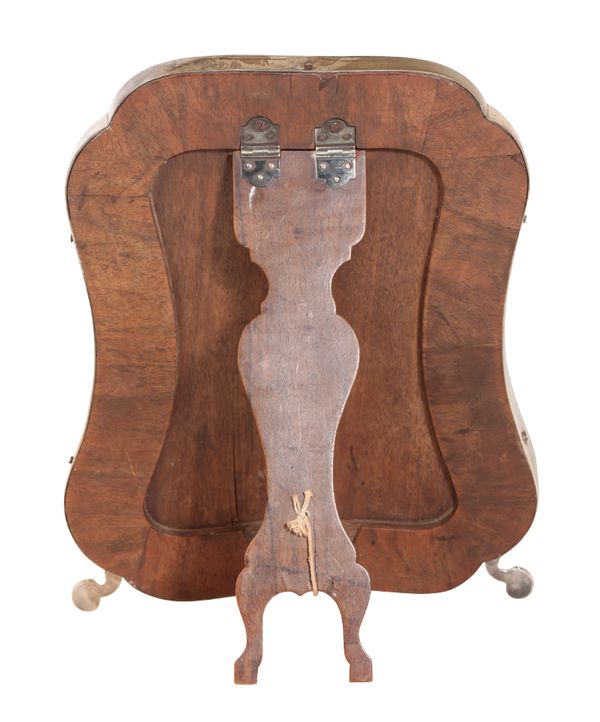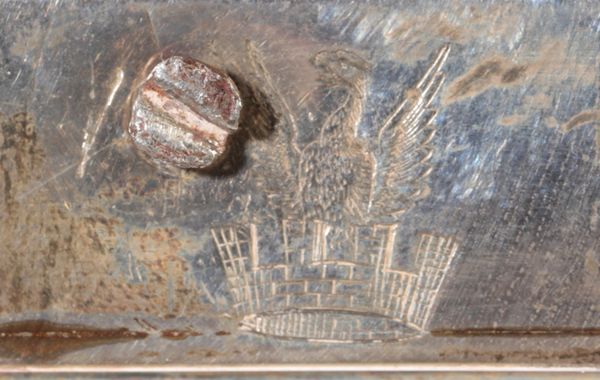makers mark of Paul de Lamerie, London 1727, of shaped oval form retaining the original mirror plate, in a moulded border, on simple scroll feet, the top of the frame engraved with the crest of James Medlycott (died 1731) the back in walnut with a simple silhouette baluster strut secured by the original shaped silver hinges, 33cm high
| Estimate: | £10,000 - £20,000 |
| Hammer price: | £15,000 |
Provenance: James Medlycott (1658-1731) of Ven House, Milborne Port, Somerset
Thomas Medlycott, son of the above
Thomas Hutchings, nephew of the above
Sir William Coles Medlycott (1767-1835), son of the above
Sir William Medlycott (1806-1882)
Sir William Medlycott (1831-1887)
Sir Edward Medlycott (1832-1902)
Sir Mervyn Medlycott (1837-1908)
Sir Hubert Medlycott (1841-1920)
Sir Christopher Medlycott (1907-1986)
Sir Mervyn Medlycott (1947-2021)
and thence by descent.
Note: It is fitting that Medlycott employed the leading silversmith of his generation for his personal shaving mirror. Having made a fortune as a lawyer and Master in Chancery, Medlycott purchased a seat in Parliament and set about building one of the most beautiful late Baroque houses in the kingdom, Ven House at Milborne Port. The house remained in the Medlycott family until the mid-20th century when many of the contents were transferred to the Medlycott’s other seat at Sandford Orcas Manor.
Paul de Lamerie
Paul de Lamerie’s parents were Huguenots, who probably left France for religious reasons in the early 1680’s. After serving as an apprentice to a London goldsmith, Pierre Platel, de Lamerie registered his mark and established his own workshop in 1712. The wide range of styles represented during de Lamerie’s 40 year career could not have been made, or even designed, by one individual, but there are some consistent features in quality and “trademarks”, such as the fact that his workshop continued to use the higher Britannia standard of silver alloy for some 12 years after it ceased to be compulsory. He supplied clients as far afield as Russia and America, but for the most part his clients at home were not members of the aristocratic elite. Although he was appointed Royal Goldsmith in 1716, his mark does not appear on any Royal plate. Indeed, most of his clients were prosperous landowners and members of the Whig ascendency, much like James Medlycott. After his death in 1751, the obituary which appeared in the “London Evening Post” spoke of de Lamerie as “particularly famous in making fine ornamental Plate, and .... very instrumental in bringing that Branch of the Trade to the Perfection it is now in”.





